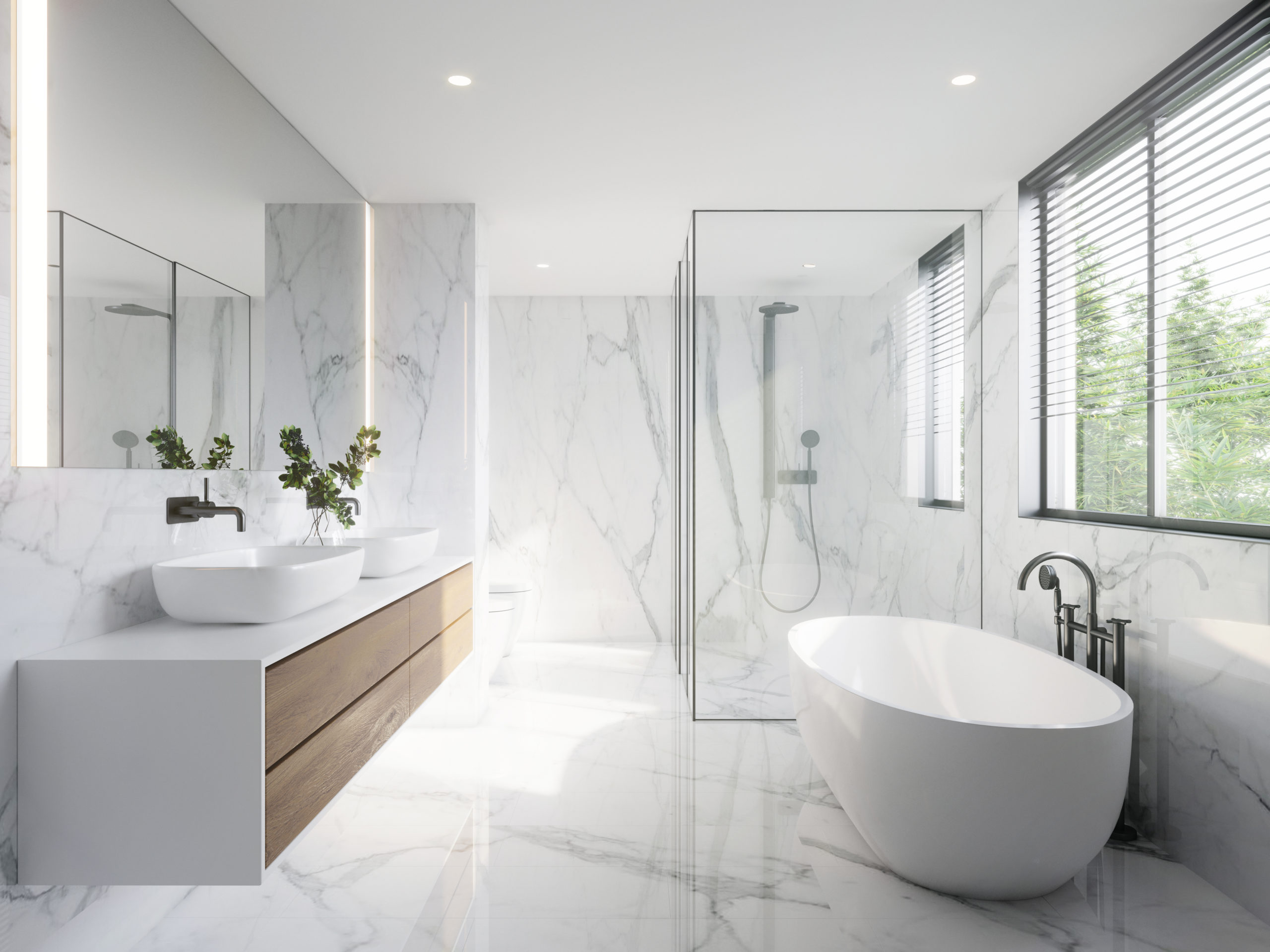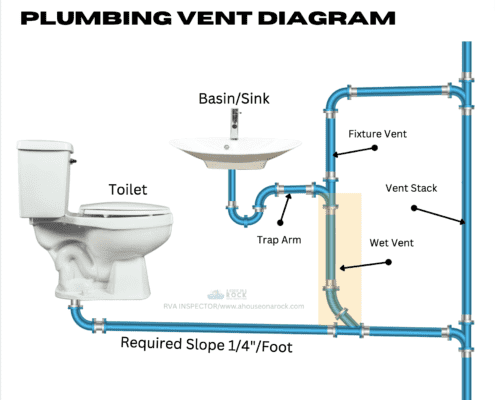The Essential Role of Correct Ventilation in Plumbing Systems
The Essential Role of Correct Ventilation in Plumbing Systems
Blog Article
How do you actually feel about Why Plumbing Air Vents Are Important?

Appropriate air flow in plumbing systems is usually neglected, yet it is important for keeping the capability and safety and security of your home's pipes. Air flow aids control air pressure, avoid the accumulation of hazardous gases, and guarantee the effective removal of waste. In this overview, we will explore the value of correct plumbing ventilation, exactly how it functions, and the advantages it brings to your pipes system.
Just How Air Flow Functions in Plumbing Equipments
Air Pressure Regulation
Proper ventilation maintains balanced atmospheric pressure within the pipes system. When water moves via pipelines, it displaces air. Without appropriate air flow, this variation can produce unfavorable pressure, leading to slow drains pipes or siphoning of water from traps, which can create unpleasant odors to leak into the home.
Stopping Sewage System Gas Buildup
Among the most vital functions of pipes vents is to prevent sewage system gases, such as methane and hydrogen sulfide, from building up within the home. These gases can pose severe health and wellness threats and are extremely combustible. Vent pipes enable these gases to run away safely outdoors.
Aiding in Waste Removal
Ventilation helps in the efficient elimination of wastewater by stopping airlocks in the drain system. When air can move openly via the vents, it permits water and waste to flow efficiently via the pipes, decreasing the threat of clogs and backups.
Benefits of Correct Ventilation
Boosted System Efficiency
Appropriately ventilated pipes systems run more effectively, with fewer clogs, faster draining, and less pressure on the pipes. This efficiency prolongs the life-span of the plumbing system.
Improved Air Top Quality
By avoiding sewage system gases from entering your home, appropriate air flow adds to much better indoor air quality, making your living environment healthier and much more comfortable.
Preventing Water Damage
Sufficient ventilation assists protect against water from being siphoned out of traps, which can bring about sewage system gases entering the home and creating water damages gradually.
Steps to Make Certain Appropriate Air Flow
Consulting Plumbing Codes
Always speak with neighborhood pipes codes when designing or customizing your plumbing system. These codes offer the required guidelines for correct venting and ensure your system fulfills safety and security criteria.
Routine Inspection and Maintenance
Normal evaluations can help determine prospective ventilation problems prior to they end up being significant troubles. Upkeep jobs, such as cleaning up vent pipes and checking for blockages, are crucial for maintaining the system in good working order.
Professional Installment
For new setups or significant modifications, it's smart to work with an expert plumbing technician. They have the knowledge to guarantee the ventilation system is correctly made and installed according to code.
Comprehending Ventilation in Pipes
Ventilation in pipes refers to the network of pipes that permit air to flow via the drainage system. These vents offer multiple purposes, consisting of regulating atmospheric pressure within the pipes, preventing drain gases from entering the home, and helping in the smooth flow of wastewater.
Types of Pipes Vents
Main Heap Vent
The primary pile vent, likewise referred to as the air vent pile, is the primary air vent in a plumbing system. It prolongs from the main drainpipe line up via the roofing system, permitting gases to leave and fresh air to go into the system.
Branch Vent
Branch vents connect to the major stack vent and offer individual components, such as sinks, toilets, and showers. These vents make sure that each fixture has sufficient air flow to work properly.
Air Admission Valve (AAV).
An Air Admittance Valve (AAV) is a one-way valve that permits air to go into the plumbing system without the requirement for a traditional air vent pipeline extending via the roofing system. AAVs are typically made use of in restorations or areas where setting up a typical air vent is impractical.
Indicators of Poor Ventilation in Plumbing.
Slow Draining Fixtures.
If your sinks, tubs, or toilets are draining pipes gradually, maybe an indicator of inadequate air flow. Insufficient air circulation can produce a vacuum cleaner result, making it tough for water to drain properly.
Gurgling Appears.
Gurgling noises coming from drains pipes are usually an outcome of air being sucked through water traps due to negative stress in the pipelines. This is a clear indication of insufficient air flow.
Unpleasant Odors.
Sewage system odors inside your home are a warning that your plumbing system is not properly ventilated. This might suggest that drain gases are not being appropriately vented outside, causing possibly dangerous conditions.
Common Ventilation Mistakes.
Insufficient Vent Sizing.
Making use of undersized air vent pipelines can bring about bad air circulation and stress imbalances in the system. It's important to use vents that fulfill the details needs of your plumbing system.
Improper Vent Placement.
Placing vents as well far from the fixtures they offer can decrease their performance. Appropriate positioning guarantees that air can stream openly and successfully with the system.
Ignoring Code Needs.
Building ordinance give details standards for plumbing ventilation. Neglecting these codes can result in a system that fails to function appropriately and may lead to pricey repair services or health hazards.
Verdict.
Proper ventilation is an important part of any kind of plumbing system, making certain that it works efficiently and safely. By recognizing the value of air flow, acknowledging the indications of inadequate ventilation, and taking actions to preserve your system, you can protect against costly problems and safeguard your home's air top quality.
4 Things You Should Know About Your Plumbing Vents
What Plumbing Vents Are
Also called a vent stack, a plumbing vent is a vertical pipe attached to your drain line that runs through your roof. The plumbing vent pipe, or plumbing air vent, removes gas and odors from your plumbing system and allows fresh air to enter the pipes, helping the water to flow out of the drain pipes.
What Plumbing Vents Do
Plumbing vents have two basic functions. One of which is to allow unpleasant smelling wastewater and sewer gasses to escape your plumbing system instead of entering your home. Plumbing vent pipes are typically located on roofs, away from windows, to ensure the fumes exit the home completely.
The other function of the plumbing vent is to move fresh air into your plumbing system. This helps move water through every plumbing fixture in your house, like toilets and sink drains. Think of the way in which you need to let a little air into the bottle as you pour soda in order to make the drink flow smoothly.
Different Types of Plumbing Vents
True vent: This is the most common vent option. In simplest terms, a true vent is a vertical pipe attached to your drain line that exits through the roof. They often function as the main vent that other fixtures can connect to. Re-vent pipe or auxiliary vent: Attached to the drain line near specific plumbing fixtures, re-vent pipes run up and over to connect to the main vent. Common vent: Two plumbing fixtures installed on opposite sides of a wall are typically tied into the vent stack using something known as a sanitary cross. Wet vent: This venting option operates as a drain pipe and a vent at the same time. Wet vent drainage systems drain water from one fixture while venting the air from another. Although they’ve been used for over 100 years, wet vent systems have only recently been added to the plumbing code in many areas. If you’re planning on installing one in a bathroom remodel, make sure you check your local code prior to construction. Loop vent: For free-standing fixtures like kitchen island sinks, loop vents are ideal. These vent pipes run under the floor, rise from the P-trap, and create a loop inside the cabinet sink. Air admittance valve: An AAV is a one-way mechanical valve typically installed at the site of the plumbing fixture. AAVs allow venting to occur without having to tie into a larger venting system. They’re ideal for venting fixtures where you aren’t able to easily connect to an existing vent system. Common Plumbing Vent Issues
Although vent pipes typically don’t have water flowing through them, they’re still subject to many typical plumbing issues. For example, clogs are one of the most common problems associated with sewer vent pipes. If your vent pipe gets clogged, all of your plumbing fixtures tied into the vent stack will be affected.
A sink with a slow drain that bubbles and gurgles or a strong sewage smell around your toilet are both indicators that your toilet vent pipe is clogged. Because most vent pipes exit through the roof, old leaves, twigs or even a bird’s nest could be clogging the pipe.
Clogs in your vent pipe system cause a buildup of negative pressure, meaning that water won’t be able to flow out of your home very well. It’s similar to putting your finger over the opening of a straw to trap water inside. When you remove your finger, the water is able to flow out of the straw.
If you suspect you have any blockage in your vent, make sure you have a professional come examine the situation. Left unchecked, a blocked air vent can lead to other costly repairs, like leaks and sediment buildup.
Under Pressure
Pipe vents are essential aspects of a home’s plumbing system. Owning a home means learning about all sorts of things you never put much thought into before. But by understanding as much as you can about the important systems of your home, you can keep those budgets intact and those anxiety levels low.
https://www.homeserve.com/en-us/blog/home-improvement/plumbing-vents/

Do you like reading up on ? Create a remark below. We will be glad to see your thoughts about this piece. In hopes to see you back again in the near future. Are you aware of someone else who is involved in the topic? Take a moment to promote it. Many thanks for your time. Kindly come visit our site back soon.
Visit Url Report this page